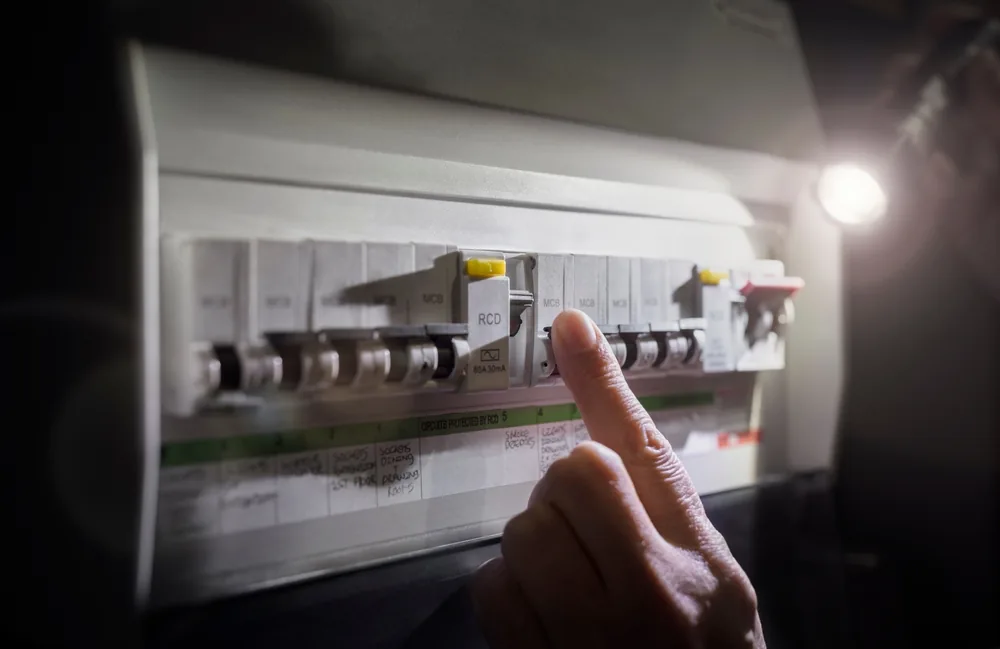
It’s frustrating when the power cuts out suddenly while you’re cooking or using your tools, or even relaxing at home. That familiar click of a tripped breaker usually means something isn’t quite right in your electrical system. While this issue can sometimes be caused by simple overuse, it can also signal deeper issues that shouldn’t be ignored. Understanding why it happens and how to fix it safely can save you time and money while preventing potential hazards down the line.
Our team at Hudson Electrical is familiar with all kinds of electrical issues in Central Coast homes and businesses. Circuit breakers are designed to protect your wiring from overheating or damage, but it’s often a sign that your system needs attention when they keep tripping. By identifying the root cause early, you can restore safety and efficiency while avoiding bigger repair bills in the future.
Circuit breakers are built to detect and stop unsafe levels of electrical flow. When a circuit becomes overloaded or damaged, the breaker cuts off power to prevent overheating or fire risks. Knowing what typically causes these trips can help you understand what’s going on before you decide what to do next.
When too many high-powered devices run on the same circuit, the total demand can exceed what the wiring can handle. This leads the breaker to trip, acting as a safeguard against overheating. Overloaded circuits are one of the most common causes of repeated trips, especially in older homes where wiring wasn’t designed for modern energy use.
A short circuit happens when a live wire touches another live wire or a neutral wire, causing a surge of current that the breaker immediately cuts off. Ground faults occur when a live wire touches a grounded surface, often due to damaged insulation or moisture intrusion. Both conditions are dangerous and can result in sparks with burning smells or even fire if not addressed quickly.
As appliances age, their internal wiring and components can deteriorate and cause power fluctuations that trip breakers. Old or degraded household wiring can also struggle to carry current safely, especially under modern electrical loads. Both scenarios can cause unpredictable power interruptions and increase the risk of electrical fires.
If your breaker keeps tripping, there are a few safe steps you can take before calling in a professional. These simple checks can help you narrow down the cause without risking harm or damaging your system. Always remember that if anything feels unsafe, it’s best to stop and get expert help.
Resetting a circuit breaker seems simple, but doing it correctly ensures safety and prevents damage. You need to make sure you’re not reactivating a circuit under load or forcing a breaker that’s protecting against an active fault. Using the right method helps maintain system integrity and minimise hazards.
One of the easiest ways to isolate a problem is by disconnecting all devices on the affected circuit and reconnecting them one at a time. This process helps identify whether a particular appliance or outlet is triggering the breaker. It’s a careful, step-by-step approach that keeps you safe while troubleshooting.
Electrical troubleshooting can be risky, and small resets are fine, but complex issues demand professional attention. If the same circuit keeps tripping or you notice unusual sounds or smells, continuing to tinker can make things worse. Prioritising safety means knowing when to stop and call a qualified expert.

There are times when breaker problems go beyond simple resets or overloaded circuits. Persistent tripping often signals an underlying fault that needs professional equipment and expertise to diagnose. Ignoring these signs can lead to higher energy bills, unsafe wiring, or potential fire hazards.
Some breaker problems give off clear warning signs that shouldn’t be ignored. If you notice frequent trips and unusual heat near outlets or any burning smell, you may be dealing with a dangerous wiring issue. Acting early can prevent costly damage and keep your property and family safe.
A licensed professional can identify underlying problems and ensure your system meets modern safety requirements. Switchboard upgrades (when necessary) provide better load management and protection against faults. Investing in professional inspection ensures long-term reliability and peace of mind.
Prevention is always better than repair when it comes to electrical systems. Regular maintenance and the installation of safety switches help reduce risks and improve efficiency. These proactive steps protect both your property and your loved ones from sudden electrical failures.
Circuit breakers play an essential role in protecting your property from electrical faults. But when the breakers start tripping often, they’re telling you something needs attention. Understanding the most common causes while performing basic troubleshooting and knowing when to call in a professional ensures your home stays safe and your appliances keep running smoothly.
Hudson Electrical is committed to helping homeowners and businesses maintain safe and efficient systems that meet today’s electrical demands. If your breakers keep tripping or you’re unsure what’s causing power interruptions, our licensed team can inspect and repair or upgrade your setup to restore safety and reliability.